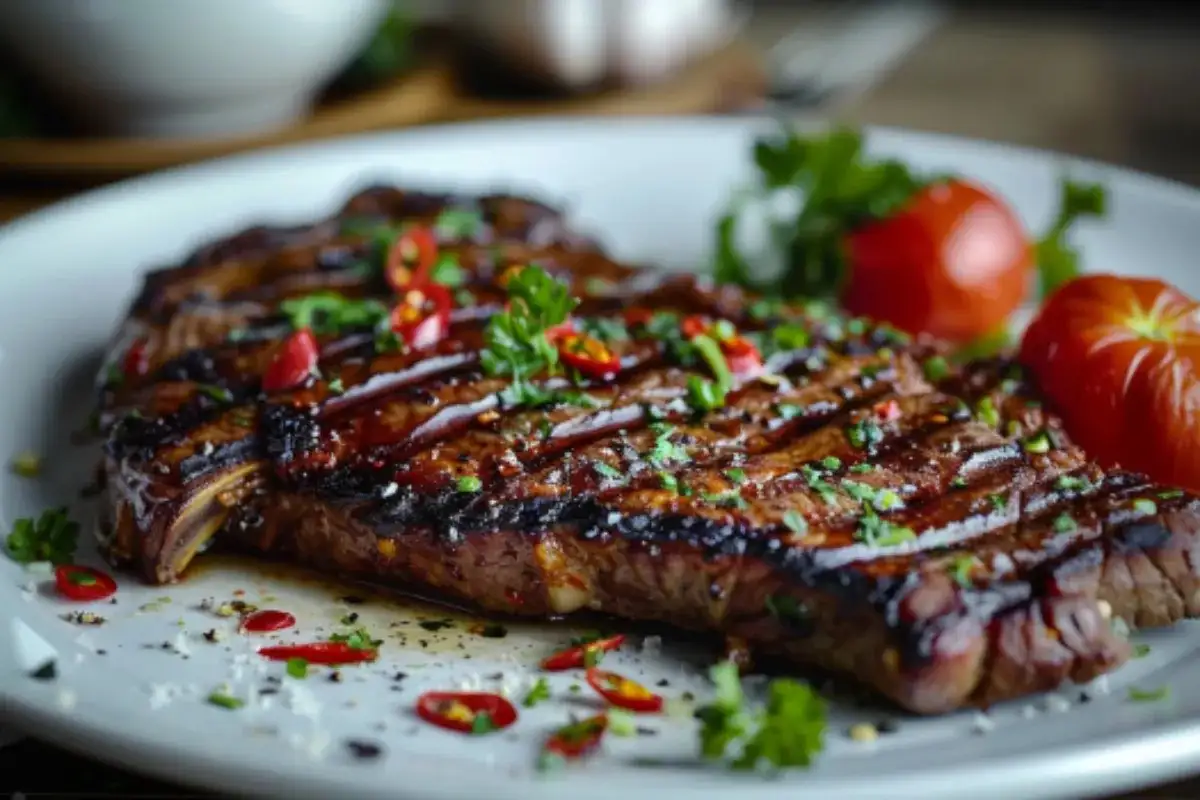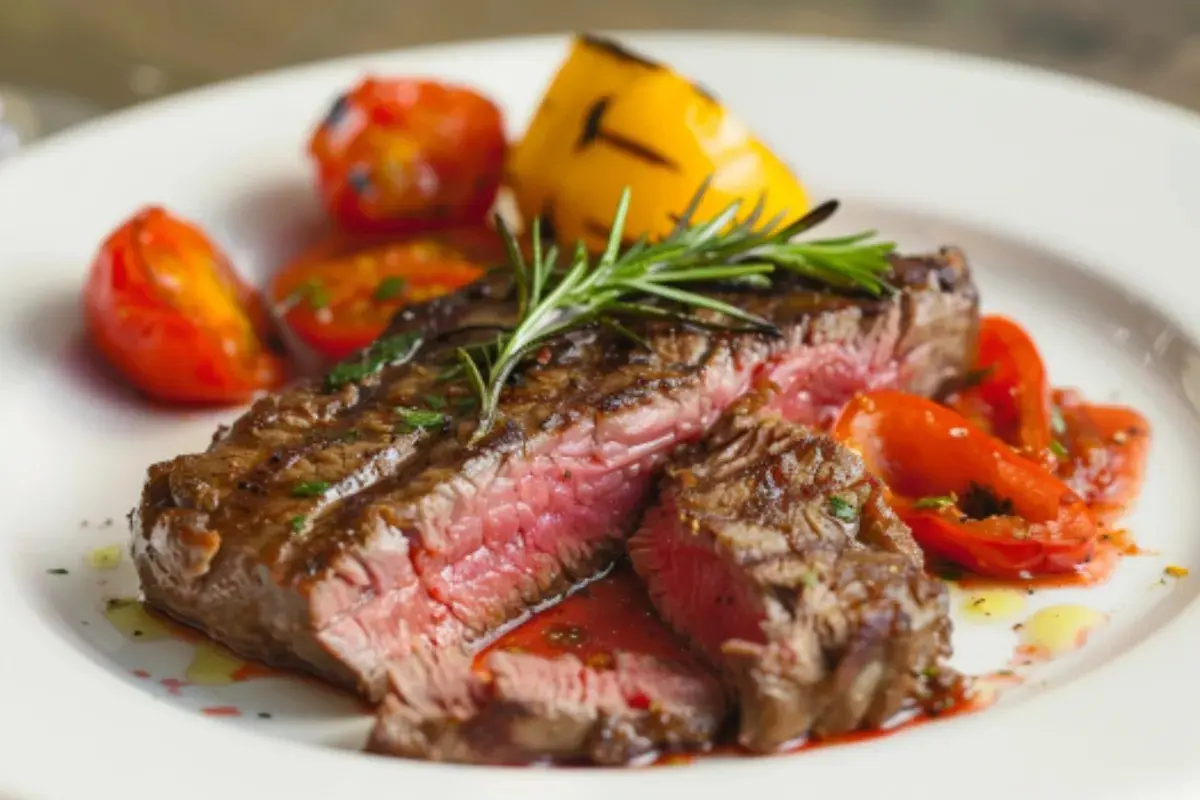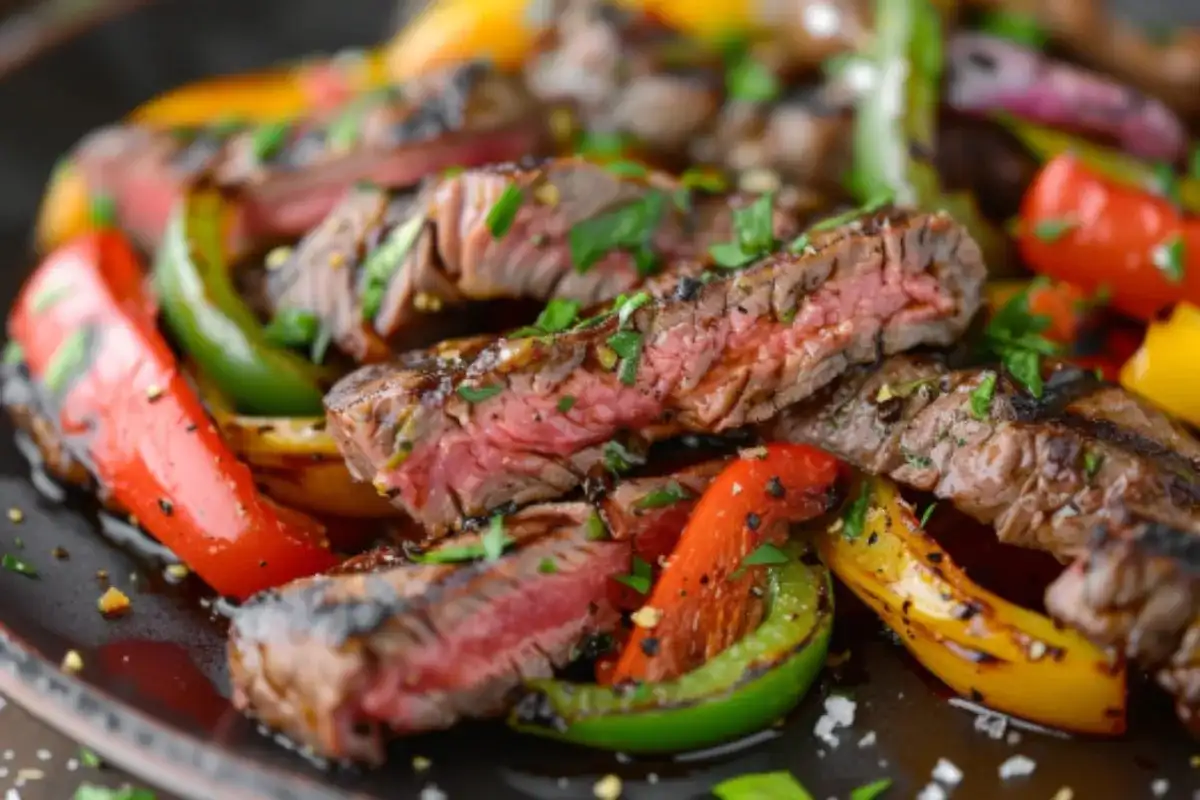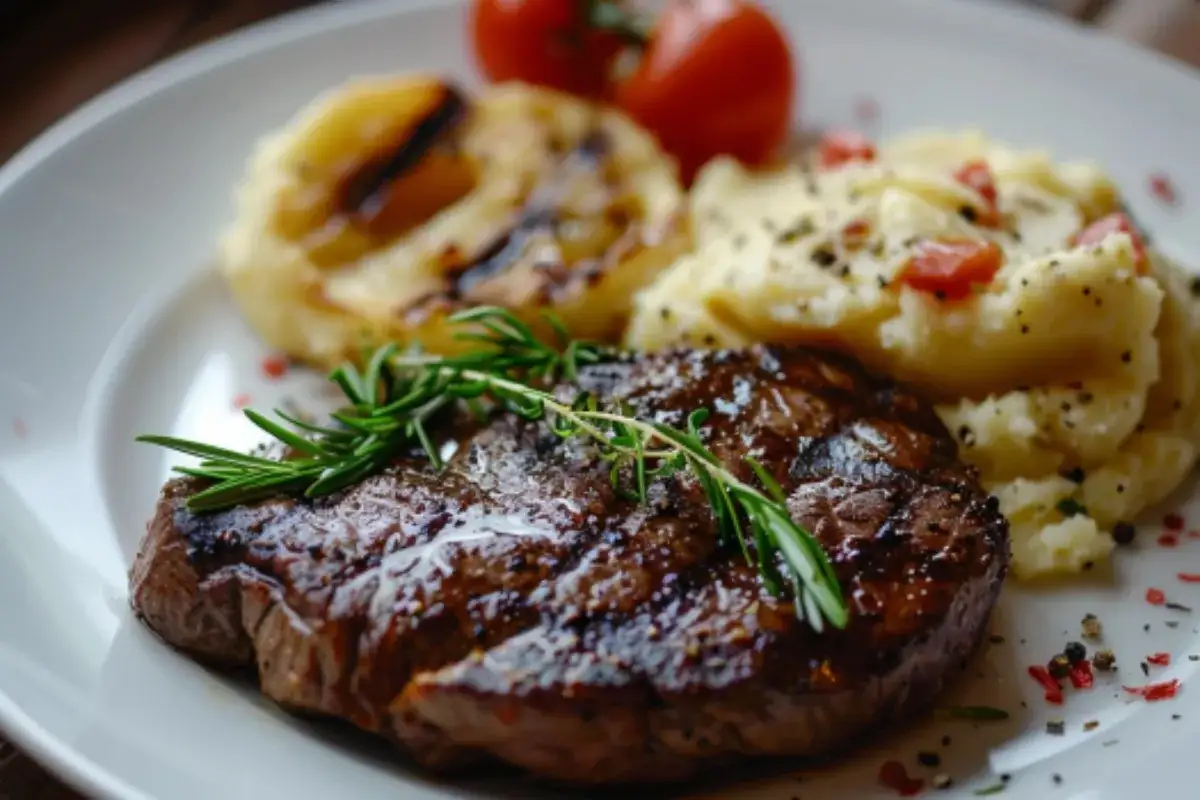Pepper steak is a delightful dish that showcases the perfect balance of tender beef, vibrant vegetables, and a savory sauce. This dish, often prepared as a quick stir-fry, is a staple in many homes due to its ease of preparation and delicious flavor profile. However, the success of your pepper steak lies primarily in the cut of meat you choose. Picking the wrong cut can lead to a chewy or bland dish, while the right one can elevate the meal to restaurant-quality. In this guide, we’ll explore everything you need to know about selecting the best cut of beef for pepper steak.
The Origins of Pepper Steak
Pepper steak is a dish with roots in both Western and Eastern cuisine. The Western version of pepper steak is often associated with French or American steak dishes, where black peppercorns are used as a crust for grilled or pan-seared steaks. However, the stir-fry version, commonly found in many homes today, has strong ties to Chinese-American cuisine. The stir-fry pepper steak you know and love probably evolved from Cantonese cooking, where quick stir-frying of beef with vegetables is a cornerstone technique.
This version of pepper steak incorporates the Chinese stir-fry method, blending it with bell peppers and onions, usually paired with a soy-based sauce. The dish’s popularity soared in America as Chinese restaurants adapted their dishes to local tastes, and pepper steak became a household name.
Why the Best Steak Cut for Pepper Steak Matters

One of the most crucial aspects of creating a perfect pepper steak is the choice of beef. Different cuts of beef have varying levels of tenderness, flavor, and fat content. When making pepper steak, you’re looking for a cut that cooks quickly and remains tender, since stir-frying is a fast cooking method.
Factors to Consider When Selecting the Best Steak Cut for Pepper Steak
When choosing the best cut of meat for pepper steak, consider the following factors:
- Tenderness: The cut should be tender enough to withstand the quick stir-frying process without becoming tough.
- Flavor: The right amount of marbling or fat content in the beef is crucial for adding flavor.
- Cooking Time: Since pepper steak is a stir-fry dish, the beef needs to cook quickly and evenly.
- Marination Compatibility: Some cuts respond better to marinades than others, which is important when you want to tenderize the meat further and infuse it with flavor.
Choosing a beef cut that balances these factors ensures that your pepper steak will turn out tender, juicy, and full of flavor.
Rotisserie chicken recipes are another great example of how selecting the right type of meat can transform your dish.
Best Steak Cuts for Pepper Steak Explained
When you’re scanning the meat section of your grocery store or speaking with your local butcher, the following cuts of beef are excellent choices for pepper steak due to their tenderness, flavor, and quick cooking ability:
1. Flank Steak
Flank steak is a classic choice for pepper steak. This cut comes from the cow’s abdominal muscles and is known for being lean, flavorful, and affordable. What makes flank steak ideal for pepper steak is its ability to hold up well under the quick, high-heat cooking required for stir-frying. If you’re unfamiliar with flank steak, you can find more details on what flank steak is.
- Texture: Flank steak has a distinctive grain, which, when sliced properly against the grain, yields tender, melt-in-your-mouth pieces.
- Flavor: While it is leaner than some other cuts, flank steak has a robust flavor that holds its own against the bold flavors of the vegetables and sauce in pepper steak.
- Cooking Tip: Always slice flank steak thinly against the grain to ensure tenderness. Marinating the steak for 30 minutes to an hour before cooking helps to enhance the flavor and tenderness further.
Flank steak’s affordability and quick cooking time make it an ideal choice for home cooks. It absorbs marinades well, making it perfect for the pepper steak dish where bold flavors shine.
2. Top Sirloin
Top sirloin is another excellent choice for pepper steak. This cut comes from the upper portion of the cow’s hindquarters and is a relatively lean yet flavorful cut. While it’s a little more expensive than flank steak, it provides a great balance between tenderness and flavor.
- Texture: Sirloin is known for being tender, especially when sliced thin and cooked quickly at high heat.
- Flavor: Top sirloin offers a rich, beefy flavor that pairs well with the soy-based sauces typically used in pepper steak.
- Cooking Tip: Similar to flank steak, top sirloin should be thinly sliced against the grain to retain its tenderness. While it doesn’t require as much marination as tougher cuts, a quick soak in a marinade will enhance the flavor.
Top sirloin’s moderate price and flavor profile make it a versatile option for pepper steak. It’s tender enough to cook quickly without sacrificing flavor, making it a top choice for those looking to impress with their stir-fry.
For more beef-based inspiration, take a look at the variety of dishes using ground beef, where texture and flavor play an equally important role.
3. Round Steak
Round steak is a leaner cut of beef that comes from the cow’s rear leg area. It’s often used in stews or braised dishes because of its lean nature, but it can work well in stir-fry dishes like pepper steak if prepared correctly.
- Texture: Round steak is leaner than sirloin or flank steak, so it requires careful slicing and marination to avoid toughness.
- Flavor: While it may not be as naturally flavorful as other cuts, round steak has a mild taste that works well with bold sauces and marinades.
- Cooking Tip: The key to making round steak work in pepper steak is to slice it thin and marinate it for at least 30 minutes. This will help break down some of the muscle fibers and add flavor.
Round steak is a more budget-friendly option, but it requires a bit more attention to detail to ensure the final dish is tender and flavorful.
4. Skirt Steak (Honorable Mention)
Skirt steak, which comes from the diaphragm area of the cow, is another flavorful cut that’s often used in fajitas and stir-fries. It has a bit more fat than flank steak, which means it carries a richer flavor.
- Texture: Skirt steak has a coarse grain similar to flank steak, making it necessary to slice it thinly against the grain for tenderness.
- Flavor: It has a beefier flavor than both flank and round steak, making it ideal for dishes that need a strong flavor component.
- Cooking Tip: Skirt steak can overcook quickly, so it’s important to watch it closely while stir-frying.
Though not as popular for pepper steak, skirt steak is an option if you want something slightly more robust in flavor.
5. Hanger Steak (Honorable Mention)
Hanger steak is a cut that’s rich in flavor and slightly more fatty than flank or sirloin. It’s often referred to as the “butcher’s cut” because butchers traditionally kept it for themselves due to its tender texture and rich taste.
- Texture: This cut is incredibly tender, provided it’s cooked to medium-rare or medium. Anything beyond that can cause it to become tough.
- Flavor: Hanger steak has a deep, beefy flavor, which can stand up well to strong seasonings and sauces.
- Cooking Tip: Cook hanger steak quickly over high heat and avoid overcooking to maintain its tenderness.
Hanger steak is a slightly more indulgent option for pepper steak, offering a richer mouthfeel and flavor.
Cuts to Avoid for Pepper Steak

While certain cuts work beautifully in pepper steak, others are best left for slow-cooked dishes or recipes that require longer cooking times. The following cuts should generally be avoided when making pepper steak:
1. Chuck Steak
Chuck steak, which comes from the shoulder of the cow, is a tough cut filled with connective tissue. While chuck steak can develop great flavor when cooked slowly, it’s not suitable for quick stir-frying. Cooking chuck steak quickly will result in a chewy, tough dish.
- Texture: Chuck steak has a lot of connective tissue that requires slow cooking to break down, making it unsuitable for stir-frying.
- Flavor: While it’s rich in flavor, the tough texture overshadows the taste when cooked quickly.
- Alternative Use: Chuck steak is better suited for stews, braises, or slow-cooked dishes like pot roast, where the long cooking time allows the connective tissue to break down and become tender.
2. Shank Steak
Shank steak, which comes from the leg of the cow, is another cut that requires long, slow cooking to become tender. It’s filled with muscle fibers and connective tissue, which makes it far too tough for a stir-fry.
- Texture: Shank steak is one of the toughest cuts of beef and should be reserved for dishes like osso buco or beef stew.
- Flavor: While shank steak can develop great flavor over time, the quick stir-frying required for pepper steak doesn’t allow enough time for the meat to tenderize.
- Alternative Use: Like chuck steak, shank steak is better used in slow-cooked dishes where the long cooking time can work its magic.
Using these tougher cuts in pepper steak will only result in frustration and a less-than-desirable meal. Stick to the more tender cuts mentioned above to ensure the best results.
The Role of Marination in Pepper Steak
Marinating beef is a critical step in preparing pepper steak, as it helps to tenderize the meat and infuse it with flavor. While some cuts, like sirloin, are tender enough to go without a marinade, tougher cuts like flank steak and round steak benefit greatly from a flavorful marinade.
What Makes a Good Marinade?
A good marinade typically contains three key components:
- Acid: This can be in the form of vinegar, citrus juice, or soy sauce. Acids help to break down the proteins in the meat, making it more tender.
- Oil: Oil helps to distribute the marinade evenly across the meat and prevents it from drying out during cooking. It also carries the flavors of the spices and herbs.
- Flavorings: Garlic, ginger, black pepper, and soy sauce are common in pepper steak marinades. These add depth and complexity to the meat’s flavor.
By marinating the beef for at least 30 minutes (or up to 2 hours for tougher cuts), you ensure that the meat absorbs the flavors and remains tender during cooking.
For a variation on marinades, you can look at the best ground chicken recipes to explore different ways to enhance flavors in various dishes.
Cooking Techniques for the Perfect Pepper Steak
Even with the right cut of beef and a delicious marinade, how you cook the beef can make or break your pepper steak. Since this dish is typically stir-fried, the goal is to cook the meat quickly over high heat to keep it tender and juicy. Check out how to stir-fry vegetables properly to complement your beef with perfectly cooked vegetables.
Tips for Cooking the Beef
- High Heat is Key: Always cook pepper steak over high heat to ensure the beef sears quickly without overcooking. High heat also helps the vegetables retain their crisp texture.
- Cook in Batches: To avoid steaming the beef, cook it in small batches. Overcrowding the pan will cause the temperature to drop, leading to soggy meat and vegetables.
- Timing is Crucial: The beef should only be stir-fried for 2-3 minutes per batch. This keeps it tender and juicy. Overcooking the beef will result in a tough texture.
- Rest the Meat: After cooking the beef, let it rest for a couple of minutes before adding it back to the stir-fry. This allows the juices to redistribute, keeping the meat moist.
Stir-Frying the Vegetables
Bell peppers and onions are traditional vegetables used in pepper steak. These should also be cooked quickly over high heat to retain their crunch and vibrant color.
- Don’t Overcook the Vegetables: Bell peppers and onions should be slightly tender but still crisp when served. Overcooking them will result in a mushy texture.
- Add Vegetables After the Meat: After stir-frying the meat, remove it from the pan and cook the vegetables separately. This prevents the meat from overcooking and allows the vegetables to develop a slight char.
The Sauce
The sauce is what ties the dish together. A combination of soy sauce, oyster sauce, garlic, ginger, and black pepper creates a rich, savory sauce that complements the beef and vegetables perfectly.
To thicken the sauce, you can mix in a cornstarch slurry (1 tablespoon cornstarch mixed with 2 tablespoons water) and allow the sauce to simmer for a minute until it reaches the desired consistency.
Step-by-Step Recipe for Perfect Pepper Steak

Ingredients:
- 1 pound of flank steak or top sirloin, thinly sliced against the grain
- 2 bell peppers, thinly sliced
- 1 onion, thinly sliced
- 2 tablespoons soy sauce
- 1 tablespoon oyster sauce
- 1 tablespoon cornstarch
- 1 tablespoon vegetable oil
- 1 tablespoon garlic, minced
- 1 tablespoon ginger, minced
- Freshly ground black pepper, to taste
Marinade Ingredients:
- 2 tablespoons soy sauce
- 1 tablespoon rice vinegar or lime juice
- 1 tablespoon vegetable oil
- 1 teaspoon sugar
- 1 teaspoon cornstarch
Cooking Instructions:
- Marinate the Beef: In a bowl, combine the marinade ingredients and whisk together. Add the thinly sliced beef and toss to coat. Let the beef marinate for at least 30 minutes.
- Heat the Pan: In a large skillet or wok, heat the vegetable oil over high heat until it’s shimmering.
- Stir-Fry the Beef: Add the beef to the pan in batches, stir-frying for 2-3 minutes until browned. Remove the beef from the pan and set it aside.
- Cook the Vegetables: In the same pan, add a bit more oil if necessary and stir-fry the bell peppers and onions for 3-4 minutes until slightly tender but still crisp.
- Prepare the Sauce: In a small bowl, whisk together the soy sauce, oyster sauce, garlic, ginger, and black pepper. Pour the sauce into the pan with the vegetables and bring it to a simmer.
- Combine and Serve: Return the beef to the pan and toss everything together, allowing the sauce to coat the beef and vegetables. Serve immediately with rice or noodles.
This recipe provides a perfect balance of tender beef, crisp vegetables, and savory sauce. The key to success is in the quick cooking and high heat, ensuring the beef remains juicy and the vegetables retain their texture.
For more delicious inspiration, don’t forget to check out recipes that highlight the importance of choosing the right cut of meat, like these birria tacos.
Frequently Asked Questions
1. What is the best cut of meat for pepper steak?
The best cuts for pepper steak are flank steak, top sirloin, and round steak. These cuts are tender, flavorful, and cook quickly, making them ideal for stir-fry dishes like pepper steak.
2. Can I use ribeye for pepper steak?
While ribeye is a delicious and tender cut, it is often too fatty for stir-frying. Ribeye is better suited for grilling or pan-searing. For pepper steak, leaner cuts like flank or sirloin are preferred.
3. Is pepper steak spicy?
Pepper steak is not inherently spicy. The dish gets its name from the use of black pepper, but it is more savory than hot. If you want to add heat, you can include chili flakes or hot sauce.
4. How should I slice the beef for pepper steak?
Always slice the beef thinly and against the grain. This ensures that the meat remains tender and easy to chew after stir-frying.
5. Can I marinate the beef overnight?
Yes, you can marinate the beef overnight. This will intensify the flavor and tenderize the meat further. However, be cautious if using a marinade with a high acid content, as it could break down the meat too much.
Conclusion
Choosing the right cut of beef for your pepper steak can make all the difference in the final dish. Whether you opt for flank steak, top sirloin, or even round steak, slicing it thinly, marinating it properly, and cooking it quickly over high heat are essential steps in achieving tender, flavorful results. With this guide, you now have the knowledge to make a delicious, restaurant-quality pepper steak at home.
By following the tips and techniques outlined here, you’ll be able to impress your family or guests with a perfectly executed pepper steak. From selecting the right meat to mastering the stir-fry process, this dish is sure to become a staple in your meal rotation. Enjoy!

